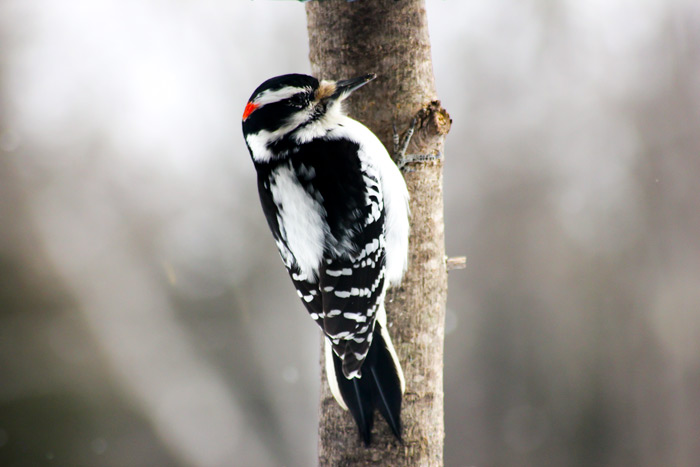
Hairy woodpeckers (Leuconotopicus villosus) have a much longer bill than the downy woodpecker, which has a thorn-like bill. Hairy woodpeckers are black and white. The black wings are checkered with white and the head has two white stripes and a large white patch runs down the center of the black back. Males have a patch of red toward the back of the head. They are a small, but a powerful bird that forages along trunks and main branches of large trees. These woodpeckers mainly eat insects as well as fruits, berries, and nuts, and sometimes tree sap.
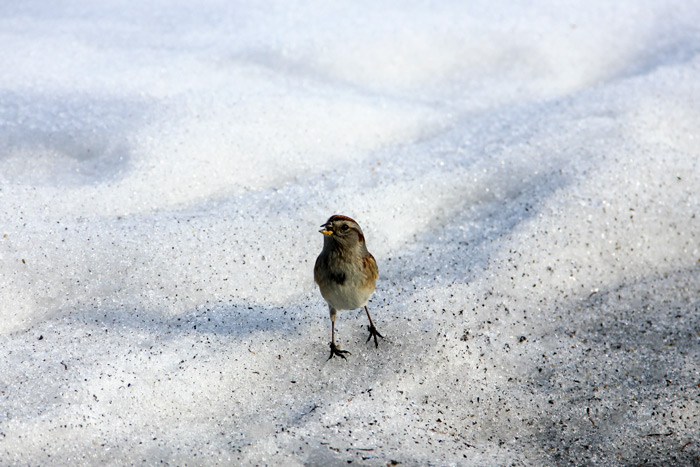
American tree sparrows (Spizella arborea) have a rusty cap and grey underparts with a small dark spot on the breast. They have a rusty back with lighter stripes, brown wings with white bars, and a slim tail. The face is grey with a rusty line through the eye and their sides have some light brown. Among the sparrows, they have fairly small bills and long, thin tails. The bill is bi-colored with black on the top and yellow below. These sparrows are small birds that fluff out their feathers, making their plump bodies look even bigger. They mainly eat seeds, insects, and some berries.
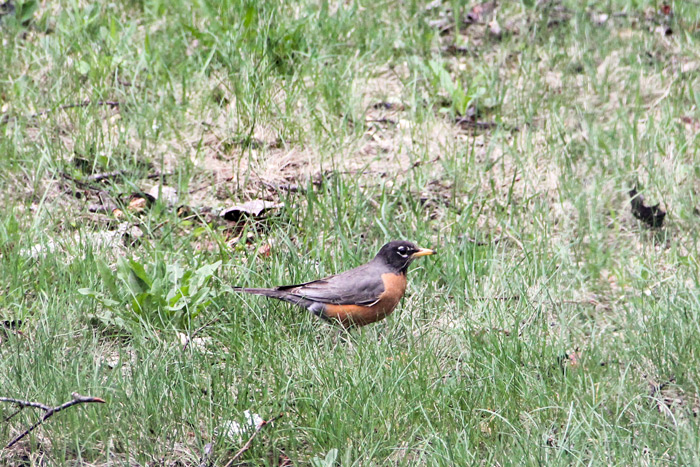
The American robin (Turdus migratorius) is a North American migratory songbird and the largest of the North American thrushes.
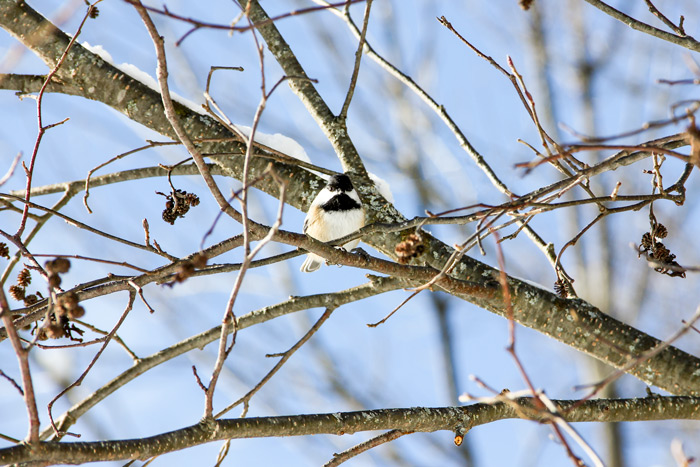
The black-capped chickadee (Poecile atricapillus) has a black cap and “bib” with white sides on the face. Its underparts are white with rusty brown on its sides.
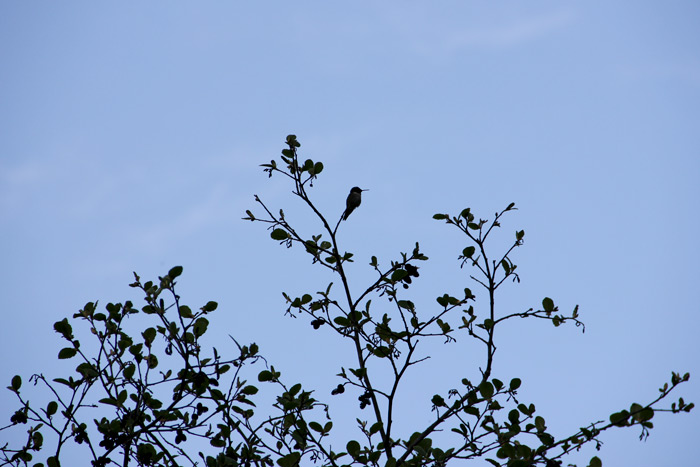
Ruby-throated hummingbirds (Archilochus colubris) are bright emerald or golden-green on the back and crown and have gray-white underparts. The males have a bright iridescent red throat.
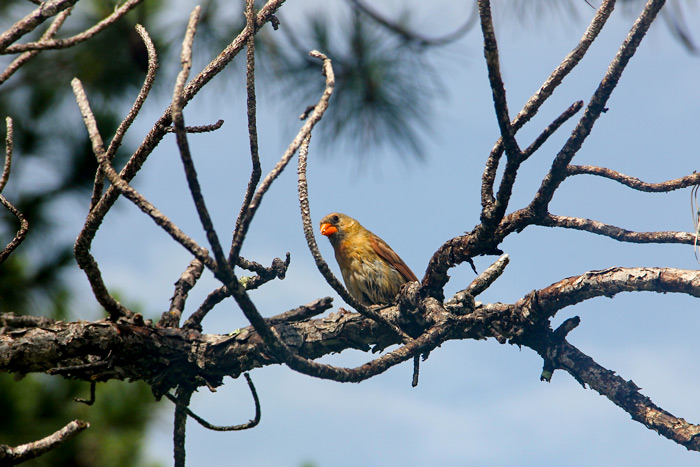
Male northern cardinals (Cardinalis cardinalis) are bright red all over, with a reddish bill and black face around the bill. The females are pale brown overall with a warm reddish color in the wings, tail, and crest. They have the same black face and red-orange bill as the males.
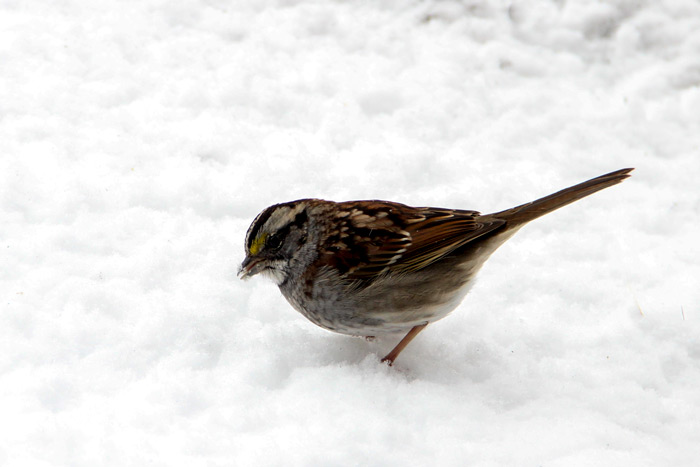
White-throated sparrows (Zonotrichia albicollis) are large, full-bodied with a fairly prominent bill, rounded head, long legs, and long, narrow tail. These sparrows have white throats and head stripes, bright yellow lores, and a gray face and breast.
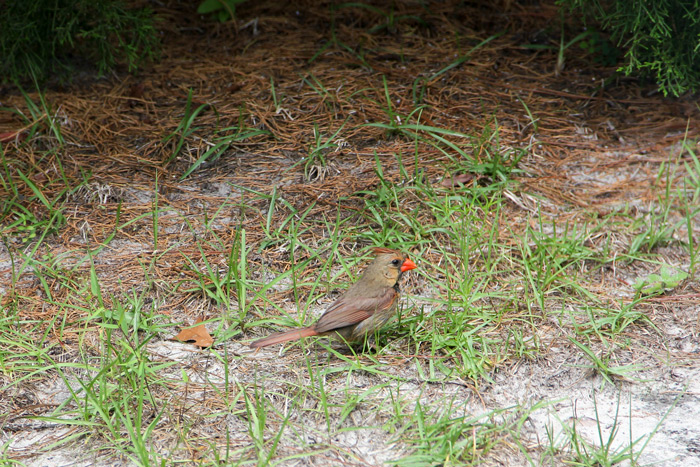
Northern cardinals (Cardinalis cardinalis) are frequent visitors to bird feeders and inhabit areas such as backyards, parks, woodlots, and forest edges.
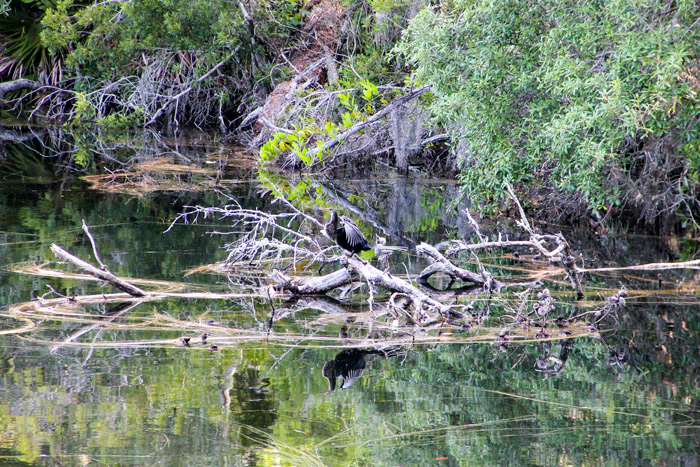
The anhinga (Anhinga anhinga) are frequently found in swamps and sometimes called darter, American darter or water turkey for its swimming habits and broad tail. Also, the Anhinga is called Snake-bird for its habit of swimming with just its long head and neck sticking out of the water.
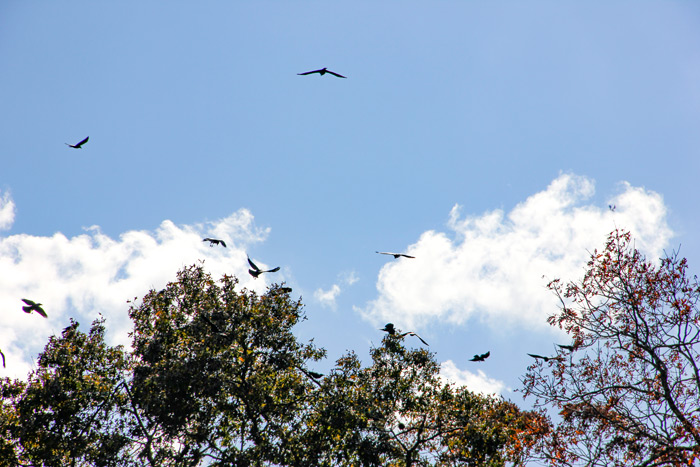
The American crow (Corvus brachyrhynchos) is a large passerine bird species of the family (Corvidae), and is a common bird found throughout much of North America. American crows are black, including their beaks and legs. These birds are very social and sometimes found in flocks in the thousands. These birds are commonly found in fields, open woodlands, and forests. They thrive around humans and can be found in agricultural fields, lawns, parking lots, athletic fields, roadsides, towns, and city garbage dumps.
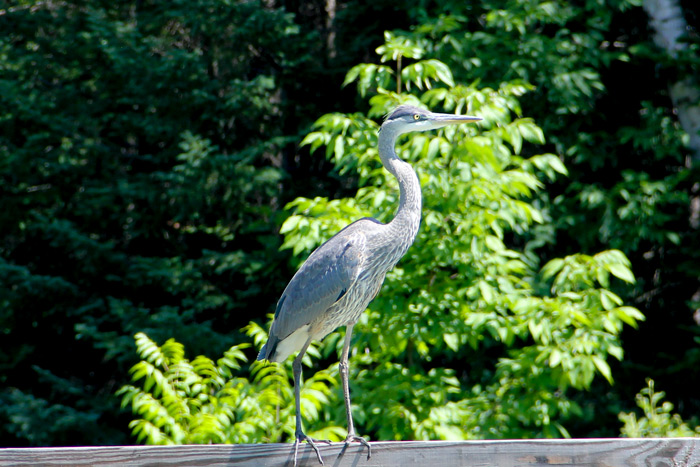
The great blue heron (Ardea herodias) is the largest of the North American birds in the heron family (Ardeidae) and is commonly found near the shores of open water and in wetlands. Great blue herons are blue-gray in color with a black stripe over the eye. These herons also have long legs, a sinuous neck, and a thick, daggerlike bill.
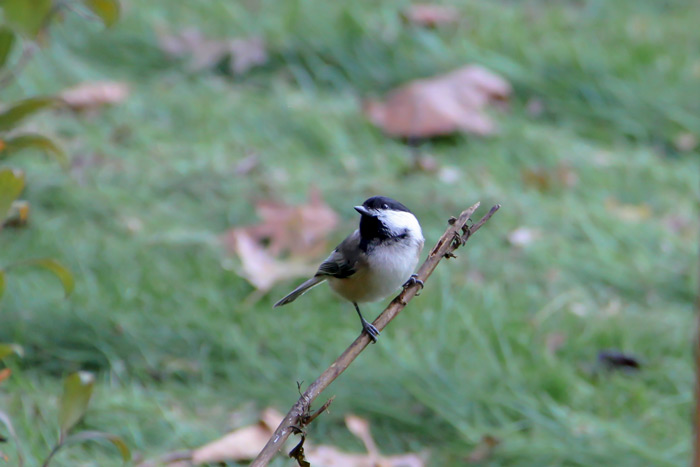
Black-capped chickadees (Poecile atricapillus) can be found in any habitat that has trees or woody shrubs, from forests and woodlots to neighborhoods and parks and sometimes weedy fields and cattail marshes. They also frequently nest in birch or alder trees.
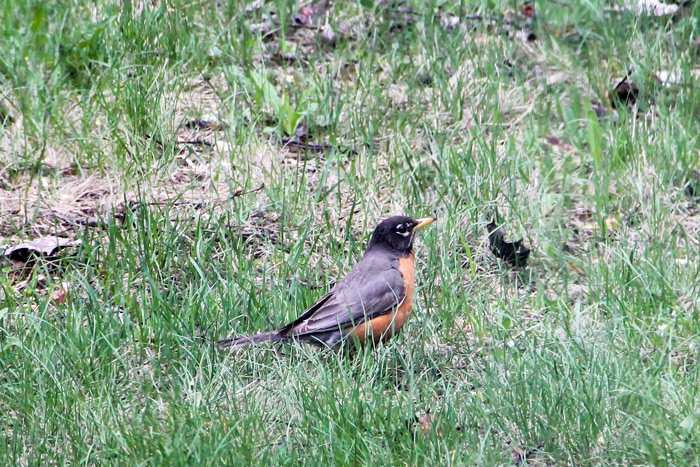
American robins (Turdus migratorius) are gray-brown in color with orange underparts and dark heads. Compared with males, females are duller in color. Females have paler heads that contrast less with a gray back, brown upperparts, and less bright underparts.

Ruby-throated hummingbirds (Archilochus colubris) live in open woodlands, forest edges, meadows, grasslands, parks, gardens, and backyards.
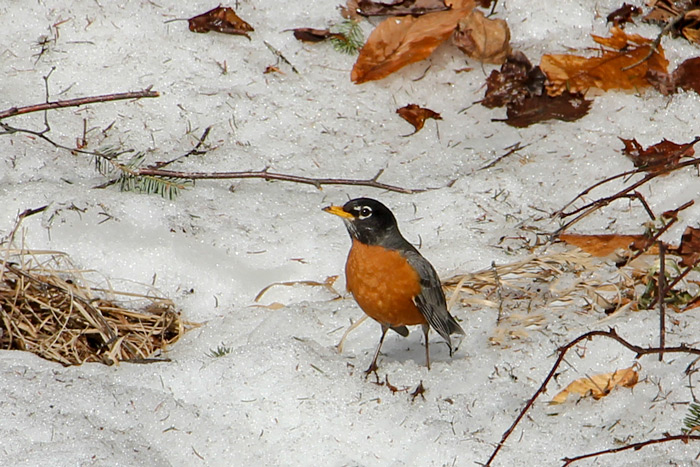
American robins (Turdus migratorius) are active mostly during the day and gather in large flocks at night. Their diet consists of invertebrates, fruits, and berries.
Leave a Reply